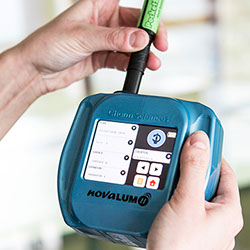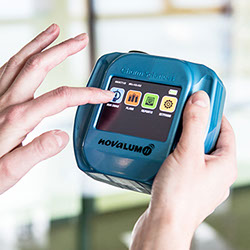What is ATP?
What is ATP?

What is ATP?
ATP, or adenosine triphosphate, is an organic molecule that is used by living cells as their main source of energy. Animal, plant, bacterial, yeast, and mold cells produce and break down ATP in order to drive a number of biological processes including muscle contraction, photosynthesis, and the creation of different proteins.


Why use ATP as an Indicator of Effective Cleaning?
How Does the
System Work?
ATP is naturally present in all organic material. Thus, most foods and wastes will contain some level of naturally occurring ATP. The Charm novaLUM system uses bioluminescence to detect residual ATP as an indicator of surface cleanliness. The presence of ATP on a surface indicates that the surface has not been adequately cleaned and has the potential to harbor and support bacterial growth. The residue may also contain hazardous material including potential allergens.
The Charm novaLUM system detects ATP using a chemical reaction. A sample is collected using the PocketSwab Plus or other Charm swab test. The swab is moistened with a buffer that aids in the removal of any biological material (ATP) on either wet or dry surface. The swab also contains an agent that will break through a biofilm and expose the underlying cells, if one is present. Once the sample is collected, it is exposed to an agent that will release the ATP contained inside any of the collected cells. The ATP released from inside those cells, along with any free ATP picked up from the equipment surface by the swab, is then available to react with the tablet reagent. The tablet reagent in the PocketSwab PLus or Charm swab test is made from two firefly enzymes called luciferin and luciferase. These are the same enzymes found naturally in the firefly. When the luciferin and luciferase enzymes are exposed to ATP, light is produced. This light is then detected and measured by the novaLUM. The amount of light detected is directly proportional to the quantity of ATP, and accordingly, is proportional to the amount of residue on the surface. The higher the count = the more ATP detected = the more residue on the surface.
© 2021 Pharmacal Research Laboratories, Inc.
